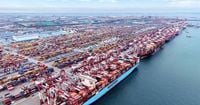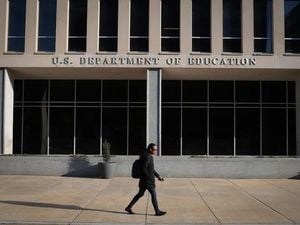U.S. consumers and investors are feeling the squeeze as inflation refuses to budge, core services prices climb, and tariffs imposed by President Donald Trump continue to ripple through the economy. In July 2025, the Labor Department reported that consumer prices rose 2.7% from a year earlier, matching June’s pace and marking a notable increase from the post-pandemic low of 2.3% recorded in April. The numbers, released on August 13, 2025, signal that inflation remains stubbornly above the Federal Reserve’s 2% target, with core inflation—excluding food and energy—rising to 3.1%.
For many Americans, the inflation story is a tale of two economies. On the one hand, falling gas prices and a slight dip in grocery bills have offered some relief. Gas prices dropped 2.2% from June to July and are now 9.5% lower than a year ago. Grocery prices slipped 0.1% last month, though they're still 2.2% higher than last July. But for those buying imported goods, the picture is less rosy. Shoes are up 1.4% from June to July, furniture jumped 0.9% in July alone (and stands 3.2% higher than last year), and coffee—a morning necessity for many—costs nearly 15% more than a year ago. Troubled overseas harvests and steep import duties, especially from Brazil, are to blame for the coffee spike, according to the Labor Department’s Bureau of Labor Statistics (BLS).
Much of the recent inflationary pressure can be traced to the Trump administration’s aggressive tariff policy. In April 2025, President Trump imposed a 10% universal tariff, layering it on top of existing higher duties on imports from countries like China and Canada. According to Brian Bethune, an economist at Boston College, "Those cost increases will be passed on to the consumer in some way, shape, or form." Bethune warns that companies may resort to "shrinkflation," reducing package sizes rather than raising sticker prices outright. For businesses absorbing tariff costs, the squeeze on profit margins could mean fewer new hires—a chilling prospect as job growth has already slowed sharply since the tariffs were announced.
The impact of tariffs is not uniform across the economy. Large corporations have begun raising prices, with Procter & Gamble announcing mid-single-digit percentage hikes on about a quarter of its products in August. Walmart has also increased prices, and cosmetics maker e.l.f. Beauty raised prices by a dollar across its entire product line as of August 1, citing tariff costs. This marks the third such price hike in the company’s 21-year history. Apparel giants like Ralph Lauren and Under Armour, as well as eyewear brand Warby Parker, are also passing higher costs onto consumers. Most of these increases weren't reflected in July’s inflation report, suggesting more pain may be on the horizon for shoppers.
Smaller businesses are getting creative to stay afloat. Princess Awesome, a clothing maker specializing in matching outfits for kids and adults, has seen its costs jump 15% to 20% due to tariffs. CEO Rebecca Melsky explained, "We have not across the board raised prices because of the tariffs -- yet." Instead, the company has added a "tip jar" on its website, asking loyal customers to help offset rising expenses. Making their signature cotton blend fabrics in the U.S. is prohibitively expensive, forcing them to join a lawsuit challenging the new duties.
The tariff burden is increasingly shifting onto American consumers. Economists at Goldman Sachs estimate that, as of June, foreign manufacturers have absorbed just 14% of the duties, while U.S. companies have shouldered 64% and consumers 22%. But by this fall, analysts expect consumers will bear two-thirds of the cost, with foreign exporters paying a quarter and U.S. companies less than a tenth. The upshot is clear: tariffs are making life more expensive for everyday Americans, especially those buying tariff-sensitive goods like apparel, footwear, and cars.
The effects of tariffs are compounded by a resurgence in core services inflation, which hit 3.1% in July—the highest in five months. According to AInvest, shelter costs, the largest component of the Consumer Price Index, rose 3.7% year-on-year, driven by housing market imbalances and rising construction costs. Healthcare services surged 3.5%, as providers grapple with labor shortages and regulatory hurdles. Motor vehicle insurance prices spiked 5.3%, reflecting costlier repairs and supply chain disruptions.
This shift from goods to services inflation poses a major challenge for the Federal Reserve. Traditional monetary policy tools—like adjusting interest rates—have limited effect on services, where demand is less sensitive to price changes. As AInvest notes, "The Fed may be forced to delay rate cuts, prolonging high borrowing costs for households and businesses." With hiring having slowed sharply since the spring and inflation still above target, the central bank finds itself in a policy bind. Financial markets are betting on a possible rate cut at the Fed’s September meeting, but some officials are wary of moving too soon. Fed Chair Jerome Powell has repeatedly warned that persistent inflation could keep the central bank on the sidelines, a stance that has drawn sharp criticism from President Trump. On Tuesday, Trump attacked Powell for not cutting rates and suggested he would allow a lawsuit against the Fed to proceed, though details about the lawsuit remain unclear.
The inflation data arrives at a tumultuous moment for the Bureau of Labor Statistics. Trump fired Erika McEntarfer, the BLS head, after the August 1 jobs report showed sharply lower hiring for May and June than previously reported. He has since nominated E.J. Antoni, a frequent critic of the jobs report, to take the helm. Meanwhile, a government hiring freeze has forced the BLS to cut back on the data it collects for each inflation report, raising concerns about the reliability and volatility of future releases. UBS economist Alan Detmeister estimates that the BLS is now collecting about 18% fewer price quotes than earlier this year.
For investors, the current landscape demands a strategic rethink. Sectors like healthcare, real estate, and insurance are seen as relative safe havens. Healthcare, despite margin pressure from rising labor and supply costs, continues to see steady demand and robust growth in specialty pharmacy and health services technology. Real estate, especially industrial and data center REITs, benefits from urbanization and the AI-driven boom in cloud infrastructure, though commercial real estate faces challenges from remote work trends. Insurance companies, particularly those in life, annuity, and property and casualty lines, are capitalizing on higher interest rates and disciplined underwriting.
By contrast, consumer discretionary sectors—especially apparel, footwear, and automotive—are at acute risk from the 2025 tariff regime. Average effective tariffs on imports have soared to 18.4%, the highest since 1933, pushing motor vehicle prices up 12.3% and adding nearly $5,900 to the cost of a new car. Apparel and footwear prices could jump 37% and 39%, respectively, as tariffs on raw materials like cotton and steel bite. According to AInvest, "Households in the bottom income decile lose about $1,300 annually due to these price surges."
Amid the uncertainty, financial advisors are urging investors to hedge against policy missteps by allocating to defensive sectors, inflation-linked assets like gold and TIPS, and diversifying currency exposure. As the Federal Reserve weighs its next move and the 2025 tariff regime continues to reshape consumer prices, Americans are bracing for a new normal—one where inflation is driven less by goods and more by the intractable costs of services, housing, and healthcare. The coming months will test the resilience of both households and policymakers as they navigate this shifting economic landscape.






